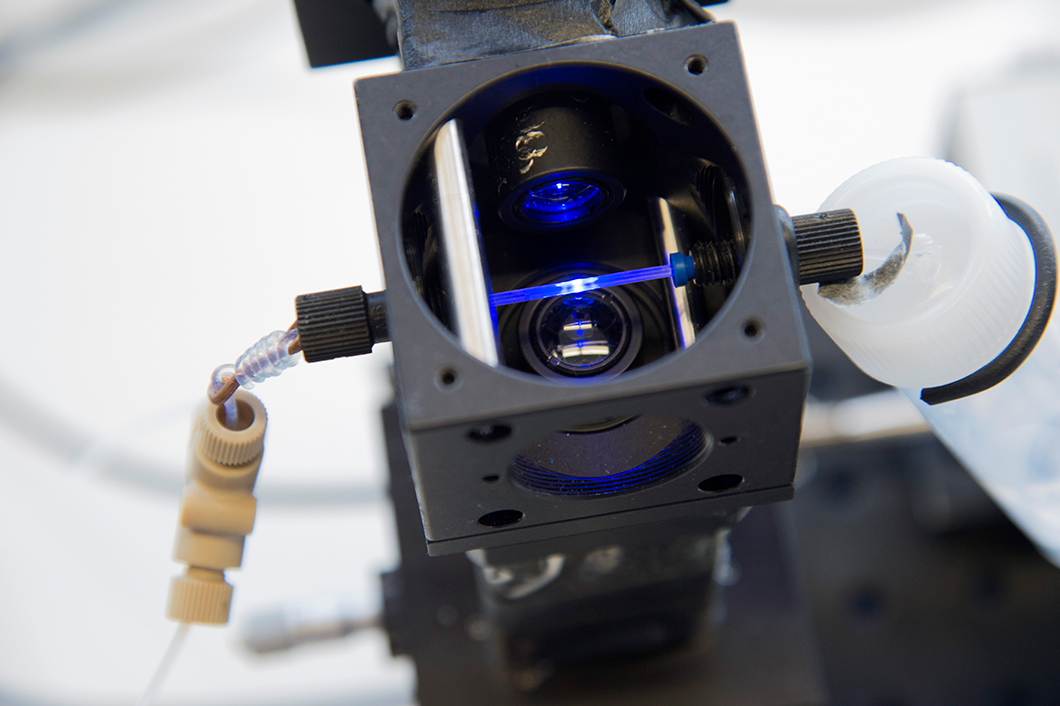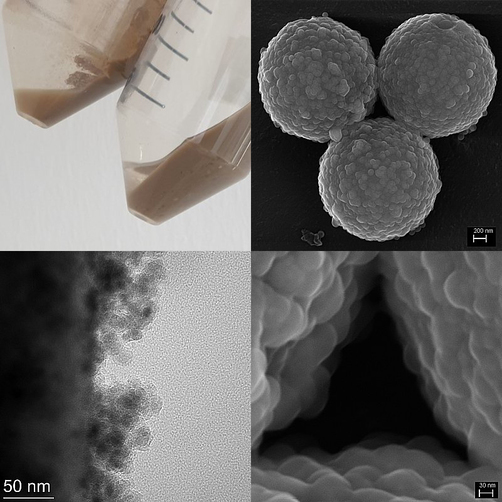
Modular 3D-opto-microfluidic setup
Source: BAM, Chemical and Optical Sensing division
Project period
01/07/2019 - 30/06/2022
Project type
BAM project
Project status
Ongoing
Description
MamaLoCA project will develop a portable, low-maintenance and easy-to-operate biosensor for on-site inspection by combining immunoassay and lab-on-chip technologies for mycotoxin detection in flour. This proof-of-concept work will investigate simultaneously several targets with antibodies ...
Location
Bundesanstalt für Materialforschung und -prüfung (BAM)
Richard-Willstätter-Straße 11
12489 Berlin
Wheat Source: BAM
Source: BAM
Source: BAM
Antibodies, chosen for their sensitivity (affinity) and specificity, are the backbone of the detection. The reaction of the antibodies and the extracted mycotoxins through antigen binding takes place in a microfluidic chip, which requires the control of the flow and adequate detection. The LOC design includes grafted magnetic nanobeads, which will be used for immobilization purposes. The adequacy of nanobeads and their decoration with antibodies will be tested with advanced surface characterization methods (XPS, EDX, SEM).
Two detection units for LOC, optical and electrochemical, will be designed and compared for their performance.
Source: BAM
division Environmental Analysis
division Chemical and Optical Sensing
division Surface Analysis, Interfacial Chemistry.
Internal support:
section eScience
division Organic Trace and Food Analysis.
External supporting stakeholder: VGMS
MamaLoCA - Modular, multiplexed, antibody-based Lab-on-Chip Analyser for food control
Food contamination by mycotoxins causes adverse health effects and significant economic losses. To avoid such damage as much as possible, screening for mycotoxins along the production chain in the food industry is essential. Conventional methods such as liquid chromatography coupled with mass spectrometry (HPLC-MS) accomplish this task well from an analytical point of view. However, these methods require transport of a sample to and its subsequent processing and analysis in a laboratory. Such a procedure is slow, costly and relies on experts. For an enterprise such as a mill, it would be more desirable to screen for mycotoxins already directly at the food processing line and rely on laboratory analysis only for the validation of a positive test result.
Concept
The MamaLoCA project addresses three challenges:
- Realization of multiplex detection of mycotoxins in a modular LOC
- a LOC design that is cheap, yields rapid and reproducible results and
- can be implemented on site, as an attachment to the conveyor belt while grains are being grinded into flour.
The project brings together expertise from diverse fields, geared towards innovation.
Selected mycotoxins for investigation are deoxynivalenol (DON), zearalenone (ZON), ochratoxin A (OTA) and ergot alkaloids.

Polymeric core particles with a customized silica shell as carrier bead to be decorated with antibodies
Source: BAM project partners
Workplan
- Design of 3 modules and a particle platform
- Development of the sample introduction module
- Development of the assay module
- Development of the detection module
- Development of a protocol for quality control of the chips and particles
- Production of the chips and particles
- Supply of the antibodies, development of immunoreagent kits
- Integration of the modules into the MamaLoCA
- Application testing
Paper
C. Tobias, E. Climent, K. Gawlitza, K. Rurack
Polystyrene Microparticles with Convergently Grown Mesoporous Silica Shells as Promising Tool for Multiplexed Bioanalytical Assays, ACS Applied Materials & Interfaces 2021, 13, 207-218


